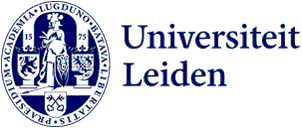24 zoekresultaten voor “vegetation” in de Publieke website
-
Geometry of Vegetation Pattern
One of the effects of climate change is the phenomenon of desertification, a process that occurs in semi-arid and arid areas and causes land degradation as well as vegetation loss. Due to the lack of resources, vegetation self-organizes to sustain itself by forming large-scale spatial patterns.
-
Lines in the sand: behaviour of self-organised vegetation patterns in dryland ecosystems
Vast, often populated, areas in dryland ecosystems face the dangers of desertification.
-
soil carbon cycling: insights from global analyses of mycorrhizal vegetation
In this PhD study, I aim to deepen our understanding of the influence of major mycorrhizal types, namely arbuscular mycorrhizae (AM) and ectomycorrhizae (EM), on the global soil carbon cycle and their potential distribution changes under future environmental shifts.
-
 Riccardo Mancinelli
Riccardo MancinelliWiskunde en Natuurwetenschappen
r.mancinelli@cml.leidenuniv.nl | +31 71 527 2727
-
Vergroten van Biodiversiteit op de Campus
Kijk regelmatig op deze pagina voor meer informatie over het vergroten van de biodiversiteit aan de Universiteit Leiden.
-
Patterns in natural systems
Promotor: A. Doelman, Co-promotores: P.J.A. van Heijster; A. Zagaris
-
Management implications for invertebrate assemblages in the Midwest American agricultural landscape
Promotor: G.R. de Snoo Co-promotor: C.J.M. Musters
-
Phenotypic plasticity and genetic adaptation of plant functional traits on global scales
In light of climate change, it is crucial to determine whether plant species can adapt to future climates to avoid extinction. Plants adapt to various conditions by altering their functional traits, such as leaf size or photosynthetic rate. Some traits appear linked and vary together between species,…
-
Fungi of the greening Arctic: compositional and functional shifts in response to climatic changes
Promotor: E.F. Smets Co-promotor: J. Geml
-
Innovation and stasis
The name ‘Jambi flora’ refers to fossil plants found as part of a rock formation from the Early Permian (296 million years old), located in the Jambi Province of Sumatra, Indonesia.
-
Ecology of the Ethiopian wolf (Canis simensis Rüppell 1835) in a changing landscape: Human carnivore interactions in Afroalpine ecosystems of
Ethiopian wolves are endangered diurnal Afroalpine rodent hunters. I investigated the interaction between wolves, rodents and human land use in Borena Sayint National Park (BSNP), Abune Yosef and Aboi Gara in Ethiopia.
-
Fertility and fontanels: women’s knowledge of medicinal plants for reproductive health and childcare in western Africa
Promotor: E.F. Smets, Co-promotor: T.R. van Andel
-
 Peter van Bodegom
Peter van BodegomWiskunde en Natuurwetenschappen
p.m.van.bodegom@cml.leidenuniv.nl | +31 71 527 7486
-
Van de polen tot de tropen: onderzoekers presenteren een unieke databank voor wereldwijde vegetatie
Welke plantensoorten groeien waar - en waarom? In een nieuwe studie in Nature Ecology & Evolution presenteert een internationaal onderzoeksteam 's werelds eerste wereldwijde vegetatiedatabank met meer dan 1,1 miljoen complete lijsten met plantensoorten voor alle terrestrische ecosystemen. Leids hoogleraar…
-
Duurzame toekomst
Hoe kunnen we onze maatschappij zo inrichten dat de wereld leefbaar blijft voor onszelf en al het andere leven om ons heen? Aan dat vraagstuk werken Leidse wetenschappers samen vanuit allerlei disciplines, van biologie tot datawetenschap en van milieueconomie tot archeologie.
-
 Amie Corbin
Amie CorbinWiskunde en Natuurwetenschappen
a.e.corbin@cml.leidenuniv.nl | +31 71 527 2727
-
Oudheid in de Hortus Botanicus Leiden
Welke planten in de Mediterrane tuin waren al bekend bij de oude Grieken en Romeinen, en hoe werden ze toegepast?
- BioREPS online seminar series
-
BioREPS Online Seminar
Lezing
-
Minder gezoem heeft effect op ons groen: Steeds minder insect-bestoven planten in Nederland
Nederland verliest plantensoorten die afhankelijk zijn van bestuiving door insecten. Milieuwetenschapper Kaixuan Pan toont dat aan na analyse van 87 jaar aan metingen van meer dan 365.000 locaties. Het nieuws is verontrustend voor onze biodiversiteit en de voedselzekerheid. ‘75% procent van onze gewassen…
-
Satellieten onthullen: deze ecosystemen zijn het meest kwetsbaar voor droogte
Ernstigere droogtes die ook langer zullen aanhouden: het wordt vooral een probleem voor geïrrigeerde landbouwgrond. Gemengde bossen met een verscheidenheid aan plantensoorten zijn het minst kwetsbaar. Dit ontdekte milieuwetenschapper Qi Chen. Zij vergeleek de effecten van droogte op verschillende ecosystemen…
-
Verkeerde tijd, verkeerde plaats: hoe klimaatverandering het trekvogels moeilijk maakt
Hoe beïnvloedt klimaatverandering de trekroutes van vogels? Voornamelijk negatief, volgens nieuw onderzoek van Yali Si van het Centrum voor Milieuwetenschappen in Leiden. ‘Het verandert de timing van de natuur, en dat in elke regio op een andere manier,’ legt ze uit. ‘Dat kan leiden tot een groeiende…
-
Best Spaans proefschrift in Soil Science in 2015 voor CML onderzoeker Daniel Arenas Lago
De
-
Multiple Scales: theory and applications
Congres/symposium
